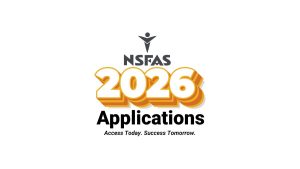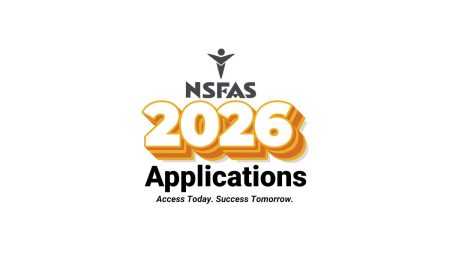If you’re planning to study at a university or TVET college in 2026, here’s everything you need to know about how to apply for NSFAS. The National Student Financial Aid Scheme (NSFAS) is South Africa’s primary financial aid program, supporting students from low-income households to access higher education. NSFAS funding covers tuition, living expenses, and other essential costs, making it a crucial resource for thousands of students every year.
Applying correctly and on time is essential—missing documents or deadlines can result in your application being declined. This guide takes you through the process step by step, ensuring you’re fully prepared for the 2026 application season.
Eligibility Criteria
To qualify for NSFAS funding in 2026, you must meet the following criteria:
South African citizenship with a valid ID.
Household income thresholds:
Up to R350,000 per year for general applicants.
Up to R600,000 per year for students with disabilities.
Acceptance at a public institution: You must have been accepted or be registered at a public university or TVET college.
Special cases:
Students with disabilities receive priority and higher income thresholds.
SASSA grant recipients may qualify automatically.
Meeting these criteria does not guarantee funding, but it is the first step toward eligibility.
What Does NSFAS Cover in 2026?
NSFAS funding aims to cover all major study-related costs:
University Students: Tuition fees, registration fees, accommodation, learning materials, transport, and monthly allowances.
TVET College Students: Tuition fees, accommodation (if applicable), transport, learning materials, and personal care allowance.
Tip: Coverage may differ slightly depending on your institution and location, so always check the specific details once funded.
Documents Required for NSFAS 2026 Application
Prepare these documents before starting your application:
Certified copy of your ID or Smart ID card.
Parents’ or guardians’ IDs.
Proof of income (payslips, affidavits, or SASSA letters).
Signed consent form from parents/guardians.
For students with disabilities: valid medical certificate.
Pro tip: Scan or photograph all documents clearly to avoid rejection.
How to Apply for NSFAS
1. Register an Account on myNSFAS
Visit the NSFAS website.
Create an account using your ID, cellphone number, and email.
Verify your account using the OTP sent to your phone or email.
2. Log In and Start Application
Click “Apply” on your dashboard.
Fill in your personal, academic, and household details accurately.
3. Upload Supporting Documents
Attach all required documents in the correct format.
Ensure each file is legible and clear.
4. Review and Submit Application
Double-check all details.
Submit before the closing date to receive a confirmation SMS or email.
5. Track Application Status
Log in to myNSFAS to monitor progress.
Typical stages: Submitted → Evaluation → Funding Eligibility → Awaiting Academic Results → Final Funding Decision.
Important NSFAS 2026 Dates and Deadlines
Expected opening date: Late September or October 2025.
Expected closing date: End of January 2026.
Warning: Late applications are not considered. Apply early to avoid system overload.
Common Mistakes to Avoid When Applying
Using incorrect or mismatched ID details.
Submitting missing or unreadable documents.
Applying after the deadline.
Providing incorrect cellphone or email.
Using unofficial websites—always apply via the official NSFAS portal.
What Happens After You Apply?
NSFAS verifies your income and documents before updating your application status. Possible outcomes:
Funded: Congratulations! Funding is approved.
Rejected: NSFAS will provide reasons for rejection.
Pending: Awaiting further information or academic results.
Reconsideration is possible if your application is rejected.
NSFAS Appeal Process (If Application is Rejected)
If your application is declined, you can appeal under specific grounds:
Income miscalculation.
Missing or incorrect documents.
Changed circumstances.
Submit your appeal via the myNSFAS portal before the stated deadline, providing supporting evidence for review.
Read more: NSFAS Status Check 2026: How to Track Your Application Step-by-Step
Frequently Asked Questions (FAQ)
Can I apply if I am studying part-time?
No. NSFAS funding is primarily for full-time students at public universities or TVET colleges. Part-time students are not eligible unless explicitly stated by NSFAS.Does NSFAS cover private colleges?
No. NSFAS funding only applies to public universities and TVET colleges. Private institutions are excluded.How long does it take to receive a funding decision?
Once your application is submitted, the evaluation process can take several weeks to a few months. The exact timeline depends on document verification and academic results.Can I update my application after submission?
Minor updates may be possible while your application is still under evaluation, such as correcting contact details or uploading missing documents. Major changes typically require contacting NSFAS directly.What if my household income changes after applying?
You must inform NSFAS of any changes, as it may affect eligibility or funding allocation. You can update your information via the myNSFAS portal.Do I need to reapply every year?
Yes. NSFAS funding is granted for one academic year at a time. Returning students must submit a new application each year.Is funding guaranteed if I meet the criteria?
No. Meeting eligibility does not automatically guarantee funding. NSFAS considers available budget, income verification, and other factors before approval.Can students with disabilities get extra support?
Yes. Students with disabilities may qualify for a higher household income threshold (R600,000) and additional allowances for special needs.How will I know if my application was successful?
NSFAS sends confirmation via SMS and email. You can also track your application status on the myNSFAS portal.What happens if my application is rejected?
NSFAS provides reasons for rejection. You can submit an appeal via myNSFAS if you believe there was an error or if circumstances have changed.
Useful Resources
Helpline: 0800 006 435
Email: info@nsfas.org.za
Social Media: Facebook, Twitter, Instagram
Moya App: Free updates on NSFAS applications and funding
Also check: How NSFAS Works for TVET College Students: A Complete Guide
Applying for NSFAS 2026 is a vital step for students aiming to study at public universities or TVET colleges. Start early, submit all required documents, and carefully follow each step to avoid mistakes. NSFAS funding opens doors for thousands of students every year—make sure you don’t miss your chance.










